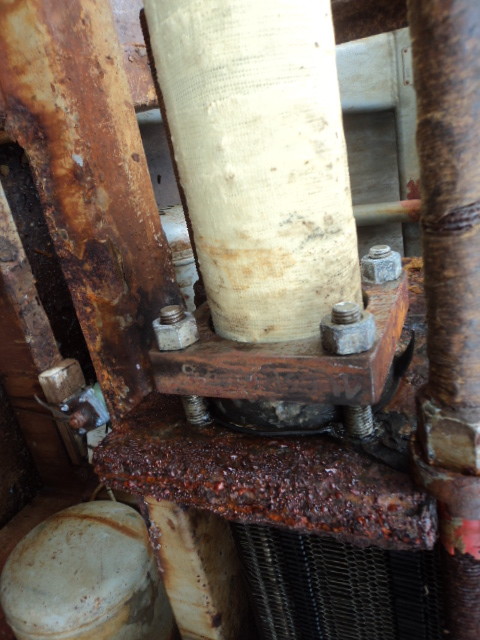
How to repair GRE Pipe Leak in 5 Steps?

GRE (Glass Reinforced Epoxy) / GRP (Glass Reinforced Plastic) / FRP (Fiberglass Reinforced Plastic) Pipes have high mechanical strength; however the material tends to be brittle and will weaken under strong impact. Leak will start to occur when the GRE/GRP/FRP piping system is subjected to heavy vibrations.
Performing GRE/GRP/FRP pipe leak repairs for small diameters can be easily done following the below repair methods.
Surface Preparation of Affected Pipe Section
Before performing any repair works, it is necessary to shut off or reduce the pipeline pressure and temperature as much as possible. For pipe leak repairs on carbon steel pipes, which require surface preparation to bare white metal; it is a different situation for GRE/GRP/FRP pipes. In the case of GRE/GRP/FRP pipes, the surface roughness and cleanliness of dust present is much more important.
It is necessary to prepare the pipe surface roughness to approximately 60 microns and the method to do this is to use inscribe lines on the surface of GRE/GRP/FRP in various directions; so that the adhesion of epoxy coating can attain high bonding strength.



Commence Pipe Leak Repair Works
Prepare a suitable amount of underwater epoxy stick and suitable length of stainless steel pipe clip. Mix the epoxy stick and tighten the pipe clip beside the pipe leak. Slide the stainless steel pipe clip and tighten the adjustable fastener of stainless steel clip slightly onto the leak location. The leak should be reduced or stopped completely.
If the position of the clip does not stop the leak completely, adjust the orientation or the amount of epoxy stick and re-tighten onto the leaking pipe.


Rebuilding of Affected Pipe Section
When the pipe leak has been stopped, apply the epoxy resin coating onto the pipe section. The thickness and length of the applied epoxy resin should be calculated to suit the pipeline operating conditions.
Allow the epoxy resin to cure for at least 4 hours so as to achieve sufficient bonding strength with the substrate. Proceed to the next step of reinforcement.



Composite Pipe Wrapping
Apply suitable reinforcement laminates (e.g. fiberglass repair tapes) to the pipe section. When performing pipe wrapping, the fiberglass tape should start at least 100mm to 200mm before the leak area. Wrap the pipe as tightly and evenly as possible, pulling with sufficient strength during each round of wrapping. Apply with at least 50% overlap and ensure that the wrapping thickness and length of repair complies to the recommendation of the manufacturer. Although the wrapping direction should be done in one direction; it is advisable to alternate subsequent rolls of fiberglass in another application direction so as to achieve maximum strength.
Inspection of Repair
Allow the repaired area to be cured for several hours (duration is dependent on pipeline operating condition). The repair job is completed and the repaired system can be operated back to normal operating conditions.


